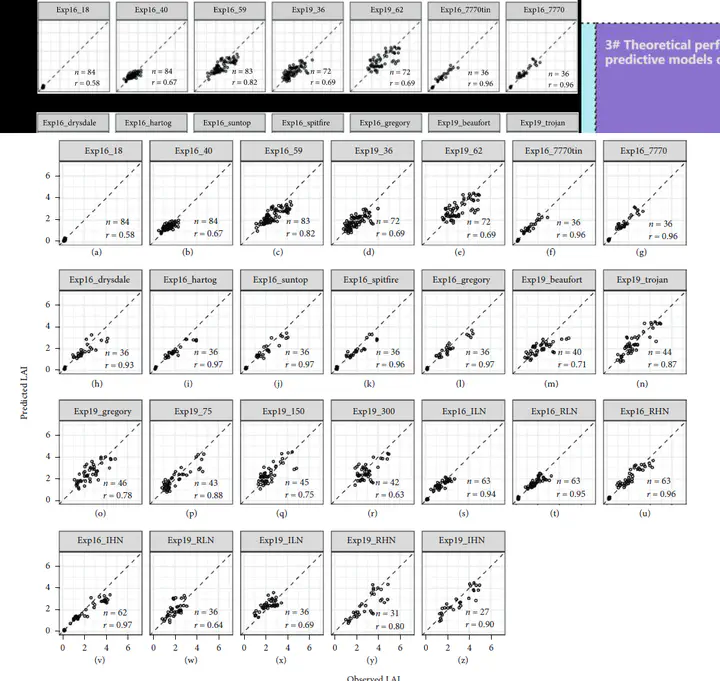Unsupervised Plot-Scale LAI Phenotyping via UAV-Based Imaging, Modelling, and Machine Learning

Abstract
High-throughput phenotyping has become the frontier to accelerate breeding through linking genetics to crop growth estimation, which requires accurate estimation of leaf area index (LAI). This study developed a hybrid method to train the random forest regression (RFR) models with synthetic datasets generated by a radiative transfer model to estimate LAI from UAV-based multispectral images. The RFR models were evaluated on both (i) subsets from the synthetic datasets and (ii) observed data from two field experiments (i.e., Exp16, Exp19). Given the parameter ranges and soil reflectance are well calibrated in synthetic training data, RFR models can accurately predict LAI from canopy reflectance captured in field conditions, with systematic overestimation for LAI<2 due to background effect, which can be addressed by applying background correction on original reflectance map based on vegetation-background classification. Overall, RFR models achieved accurate LAI prediction from background-corrected reflectance for Exp16 (correlation coefficient () of 0.95, determination coefficient () of 0.90~0.91, root mean squared error (RMSE) of 0.36~0.40 m2 m-2, relative root mean squared error (RRMSE) of 25~28%) and less accurate for Exp19 ( =0.80~0.83, =0.63~0.69, RMSE of 0.84~0.86 m2 m-2, RRMSE of 30~31%). Additionally, RFR models correctly captured spatiotemporal variation of observed LAI as well as identified variations for different growing stages and treatments in terms of genotypes and management practices (i.e., planting density, irrigation, and fertilization) for two experiments. The developed hybrid method allows rapid, accurate, nondestructive phenotyping of the dynamics of LAI during vegetative growth to facilitate assessments of growth rate including in breeding program assessments.